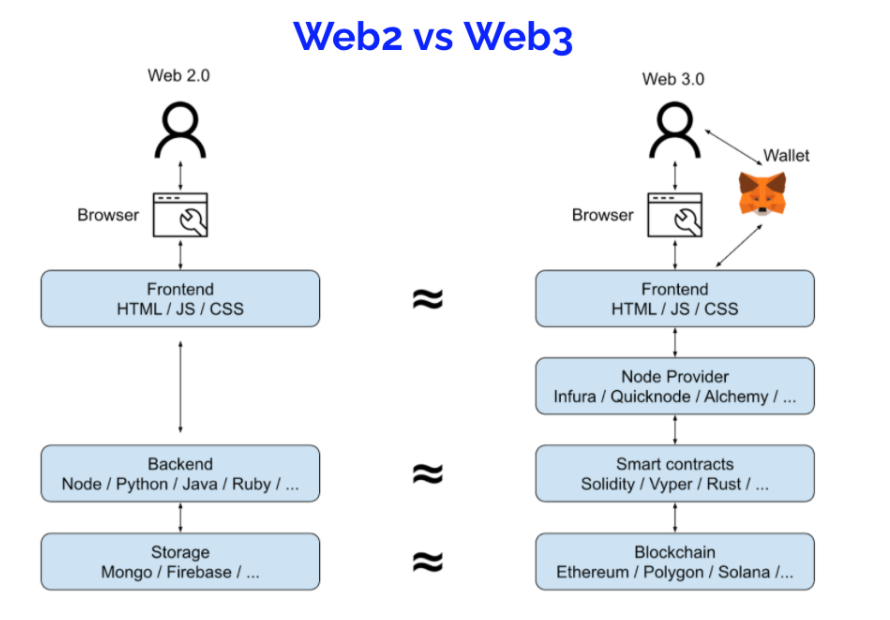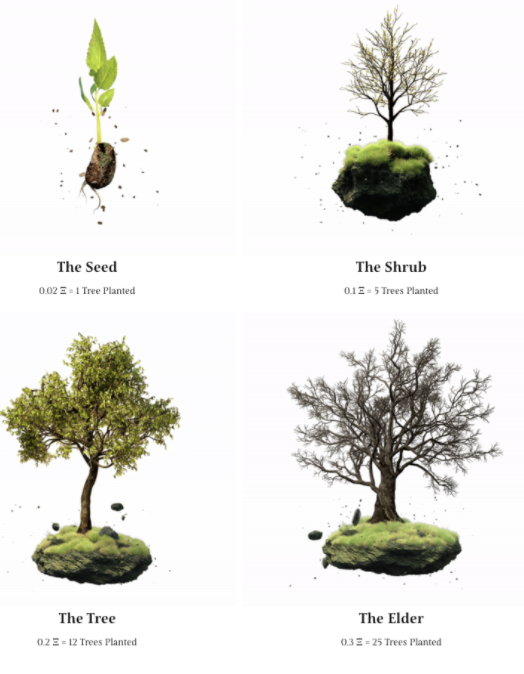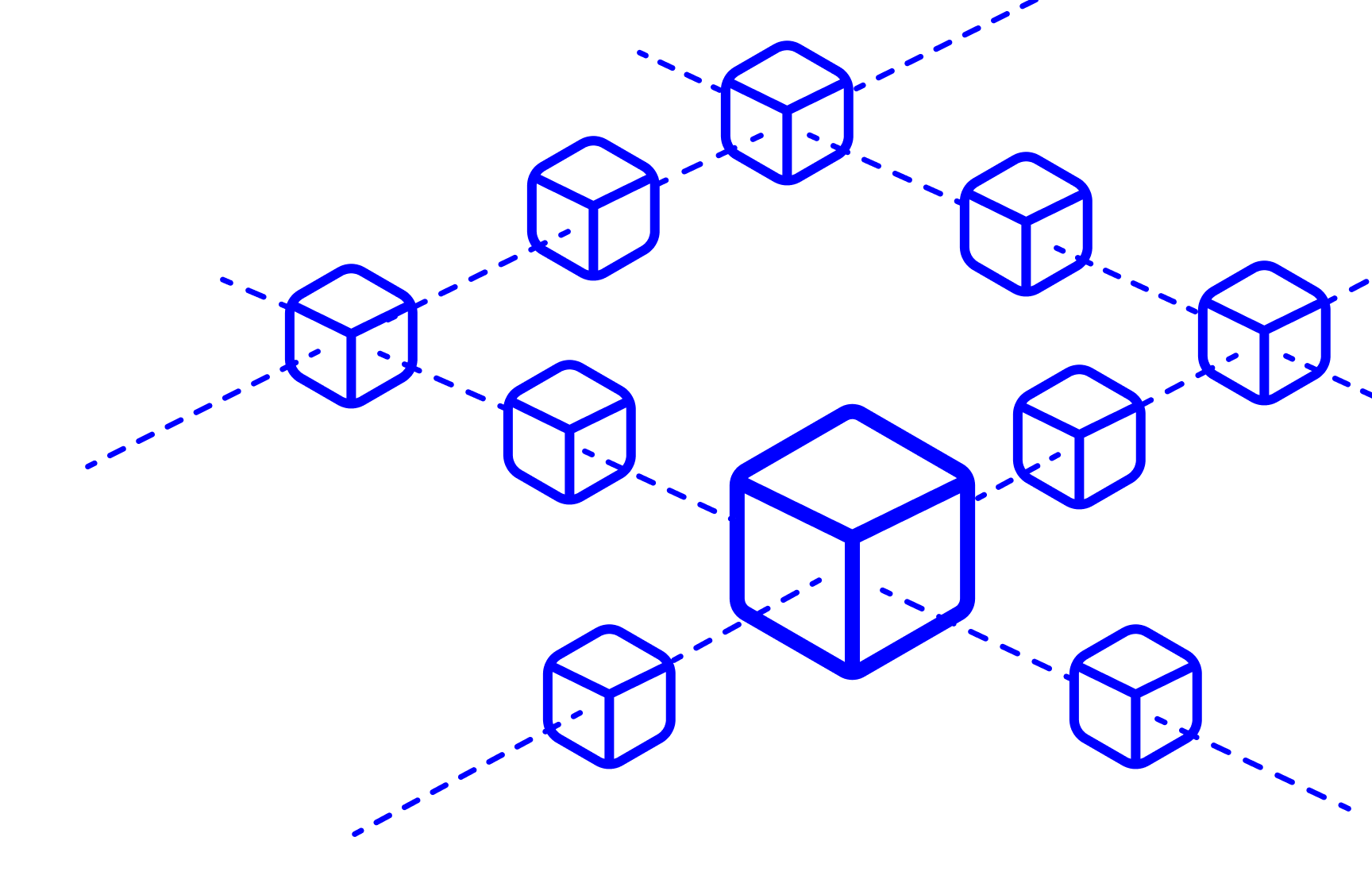What does Web 3.0 mean for us as an agency and for you as a developer?
With the crypto boom last year and more and more celebrities like Jack Dorsey and Ellen DeGeneres investing in NFTs, the Web 3.0 seems to be getting closer. Blockchain and crypto will only become more mainstream in 2022. What is Web 3.0? What does it mean for us as an agency and for you as a developer? This blog post explains the ins and outs.
From Web 1.0 to 3.0
Before we get into the technical stuff, let's have a quick recap of Web 1.0 to 3.0. Web 1.0 refers to the first phase of the Internet, from 1991 to 2004. During this period, websites consisted of very static pages and web participants can be compared to visitors. At that time, there was little to no interaction with the web. Think of a website that you can only read, but on which you cannot create an account or leave comments. From 2004, with the arrival of Facebook and Google, a new era began in which web participants now also became creators, the Web 2.0. Think for example of publishing a Twitter post or Youtube video. This increased interaction on the web. You publish something and a website receives your data. However, this opened up a new direction for the web: targeted advertising and monetization.
In recent years, distrust of big techs has increased and deregulation is on the agenda at the EU among other institutions. And here comes Web 3.0. The fundamental difference between Web 2.0 and Web 3.0 is decentralization. In Web 3.0, participants now own what they do on the web. Here, websites run on decentralized servers, blockchain, or a combination of the two. Where on Web 2.0 developers paid AWS or Azure to host their applications, on Web 3.0 this money goes directly to web participants. And where on Web 2.0 Facebook and Google are paid to display adverts, on Web 3.0 this money goes directly to users who are shown the advertisement. So in Web 3.0, intermediaries are sidelined.
What is the NFT hype about?
This may still sound somewhat cryptic. So, let's take a look at some examples of existing Web 3.0 applications.
I already mentioned one in the introduction: NFTs. Non-fungible tokens (NFTs) are crypto assets on blockchain and are distinguished from each other by unique codes. This distinguishes them from cryptocurrencies, where each token represents the same value. Therefore, NFTs are a good vehicle for storing physical value, such as art and real estate. This is not a completely new concept, but the way this is done, using blockchain and smart contracts, is. Intermediaries are sidelined and identification and verification of transactions becomes much simpler. Want to delve deeper into this? Take a look at NFT marketplaces such as OpenSea and Hic et Nunc.
So how does this work with real estate? The NFT represents the ownership information of a real estate asset, recorded on a blockchain. All details, such as ownership, building plans, the location and the investor's rights, are mapped in digital form and recorded in a smart contract. The value of the property is then divided into a fixed number of tokens and issued to investors. After the initial issuance, these can be listed on a digital exchange for secondary market trading and easily be resold by investors. Want to read more about this? Take a look at Propy, the world's first real estate NFT.

What does this trend mean for frontend?
How will de Voorhoede adapt to this trend? As can be seen in the image above, this new era of the web will not affect the frontend that much. In Web 3.0 websites will still be built using HTML, JS and CSS. However, it does influence some aspects, like hosting. Right now AWS and Azure host about 70% of all web applications. Web 3.0 enables the same web building capacity for a similar or lower price, decentralized and with increased security. Take Pocket Network for example. Not only does Pocket Network not capture or control user data, but also, instead of hosting the infrastructure directly, it coordinates between a network of nodes, making it more cloud than AWS and Azure.

Joining Web 3.0 in a sustainable manner
Although there are a lot of benefits to Web 3.0, it also brings about environmental concerns. A number of NFT artists have said they are leaving this market because this industry consumes an enormous amount of energy. For example, Ethereum, a cryptocurrency which is widely used to buy and sell NFTs, consumes 99.6 TWh annually. When the energy consumption of Ethereum and Bitcoin is added together, this comes to 301.5 TWh per year. The Netherlands, for example, consumes 117.1 TWh of energy per year as a whole.
Fortunately, there are more sustainable options and initiatives to enter this industry. Ethereum operates a Proof-of-Work (PoW) mechanism that consumes a huge amount of energy. There are alternative mechanisms, such as Proof-of-Stake (PoS), that use a lot less energy. Polygon and Tezos, among others, use this mechanism. Tezos currently has an annual consumption of 0.00006 Twh. Currently, Ethereum is fortunately also switching to PoS. Do you want to give the earth a green future? Then check which cryptocurrency and blockchain is required before buying an NFT. Want to buy a sustainable NFT? Take a look at Crypto Trees. Buy a digital tree and plant a real one at the same time.
Want to read (and listen) more?
- The podcast The Basement Entrepreneur discusses how Web 3.0 is different from Web 2.0 (from 15:20), what areas will be disrupted (from 11:55) and why this is so important.
- A 2022 prediction about the crypto, NFT and Web 3.0 landscape.
- The twitter account Web3 University, which posts a lot of threads, tips and blog posts about how you can get into Web 3.0 as a developer.
- Critterz allows you to use NFTs in minecraft and earn $BLOCK (a cryptocurrency) while playing.

